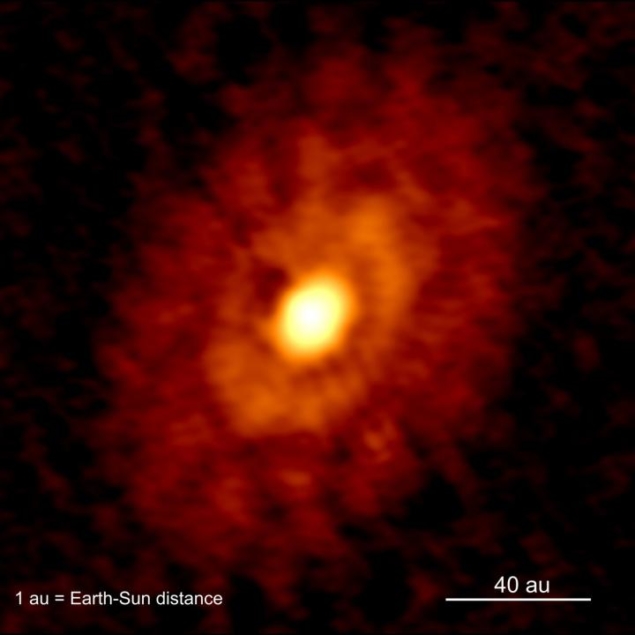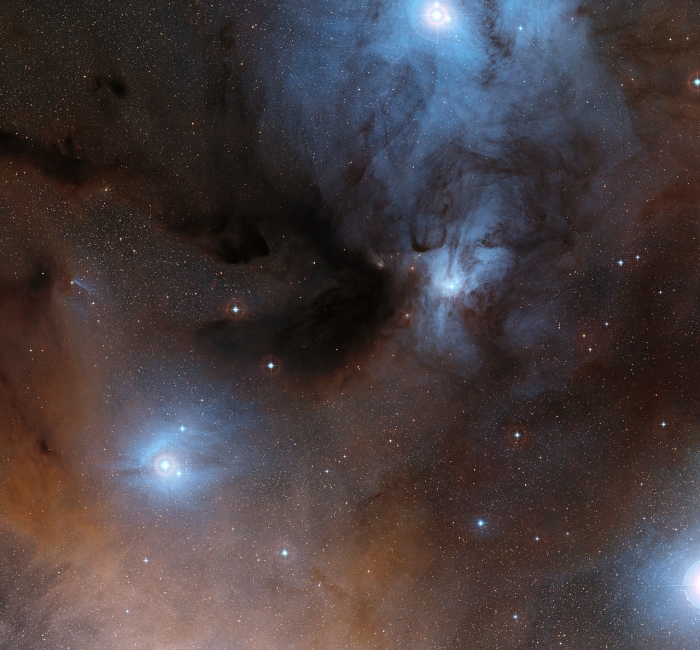Recently – at the Max Planck Institute for Extraterrestrial Physics, renowned Dominique Segura-Cox and fellow scientists observed a system that is only 1,000,000 years old, approximately at a distance of 470 light-years in the “Rho Ophiuchi,” a star formation region. The structure is idiosyncratic; A protoplanetary disk with a young ‘star’ hosting detailed rings of planet-forming material. This all suggests that the planets can form simultaneously with host stars rather than at the end of star birth.
Likewise, there were concentrated and highly dense rings surrounding the star ‘also known as protostars’ suggests the ongoing formation of a planet as per widely accepted theory for solar systems. As the planets are being born, they create vivid gaps in this disc, illuminating ring structures. As the observations show the visibility of these similar shapes around the class II future-stars, not more than one million-year-old in age. Now, the star is about to become a main-sequence star with the appearance of clear rings around it.
The phenomenal contradistinction between the two different regions, dimmed and enlightened with energy, proposes that the planet’s formation is already in progress with class II protostar. The real evidence suggests that the formation of the planet starts earlier when the star is only in the class I phase, the enthralling part about the star being only 100,000s years old within the specks of dust and gases, under the gravitation forging.

The researchers used the renowned Atacama Large Millimetre Array (ALMA) radio telescope for its observations, located in Chile. Segura-Cox’s team suggests that this phenomenon is first of its kind; the system is present in the L-1709 interstellar cloud zone about 144.103 Parsec away from us.
The Two Side-By-Side Rings
Seen at millimeter wavelengths, within the disc, shows two separate rings with an approx mass of half that of Jupiter. The rings’ radius would be around 20 AU (1 AU is the distance between earth and sun, approximately 150 Million Kilometres). With such a vast area, conveying massive material presence, these rings are enough to coalesce into solid cores; the eventual result can be creating gas-giant planets. This entire hypothesis suggests that the planets and their host stars can be of the same age, just like siblings or twins.

The team of Segura-Cox is also optimistic about researching the problem of “radial-drift” through the study of these rings; as the particles in a protoplanetary disk become bigger, they face more drag due to their surrounding gas in the disc and lose angular momentum, and in some cases, they fall into the protostar before they can form into planets.
The observations also infer that rings having a higher density of gases than the rest of the disc can set in motion a series of intensity in gas pressure; efficiently trapping solid material that could be prevented to inspiral and fall into each other, so if the planets can form around a budding star as IRS-63 then the radial drift is not a problem here.
The IRS-63 system is entire of the same size and mass as our solar system, which could also help find out answers and a glimpse of the past about our neighbors of the planets and how they formed 4.57 Billion years ago. As a science-tidbit, the Jupiter core could have formed much larger with the same distance from the sun as it has today before moving inwards.
The research was published in Nature.
References:
Segura-Cox, D.M., Schmiedeke, A., Pineda, J.E. et al. Four annular structures in a protostellar disk less than 500,000 years old. Nature 586, 228–231 (2020). https://doi.org/10.1038/s41586-020-2779-6
Also, Read: A pocketful of stars brought to you by Hubble

Fouz Siddiqui is a writer, academic and scientific management person. Presently, he is a Co-founder and Chief Information Officer at Scientia Magazine. As CIO, he oversees the implementation and strategization of Scientia’s technological and scientific vision. Concurrently, In academia, he holds a Lecturer and QM position at ATH – IST. As an academic, his research interests are Exoplanetary Sciences within Astronomy. Furthermore, he also works with Kainaat Studios, as its Manager of Science Outreach.

